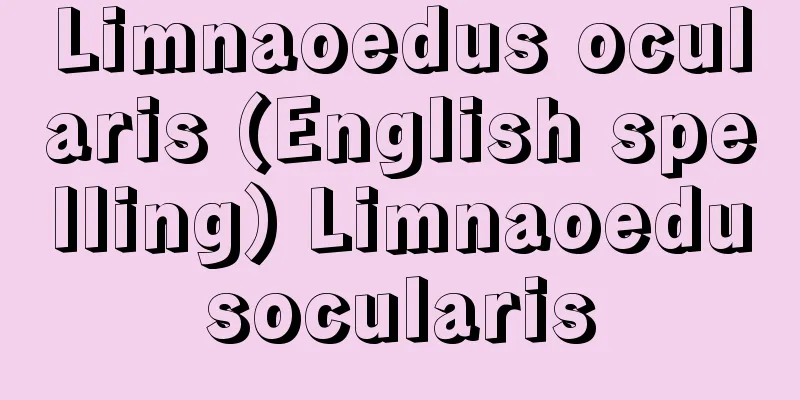Emperor Shomu

|
Year of death: Tempyo Shoho 8.5.2 (756.6.4) Year of birth: Taiho 1 (701) Emperor of the Nara period. Son of Emperor Mommu. His mother was Fujiwara no Fuhito's daughter Miyako. His given name was Suku. He became crown prince in Wadō 7 (714). When Emperor Genmei abdicated to Emperor Genshō when he was 15, he said that he was too young to pass the throne to the crown prince. In Jinki 1 (724), he succeeded Genshō to the throne and became emperor. He ruled for 26 years until he abdicated to his daughter Abe no Himemichi (later Empress Kōken) in 749. Emperor Shomu married Fuhito's daughter Kōmyōshi, and had two sons, Prince Motoi and Princess Abe. He also married Kakunoukai Hirotoji, and had three sons, Prince Asaka, Princess Inoue, and Princess Fuwa. Of these, Prince Motoi became the crown prince but died young, and Prince Asaka also died in 744, so they were not blessed with any princes. Furthermore, Shomu's accession to the throne was achieved with the strong cooperation of the Fujiwara clan due to their relationship with Kōmyōshi, and during this process, a forceful scheme was carried out, such as forcing the opposing Prince Nagaya and his son to commit suicide in 729. Furthermore, during the first half of his reign, he supported Emperor Genshō as the retired emperor, but lost four brothers, including Fujiwara Muchimaro, in a smallpox epidemic in 731-735, so the foundation of his government was not necessarily stable. He also had a divided opinion with Tachibana Moroe, who became the Minister of the Right in 731-732 and the Minister of the Left from 732-735, over the relocation of the capital. In his later years, he abdicated the throne to Princess Abe, but because he was not blessed with any princes, there remained problems with the succession to the throne thereafter. The reign of Emperor Shomu marked a major turning point for the Ritsuryo system of government. As an economic policy, the Enactment of the Law on the Permanent Ownership of Reclaimed Land in 1731 promoted the policy of reclaimed land, which resulted in a major change in the public land system that had existed up until that point. In 1739, the Fujiwara no Hirotsugu Rebellion occurred, which resulted in the central government being shaken by the move of the capital to Kunikyo (Kamo-cho, Kizu-cho, and Yamashiro-cho, Kyoto Prefecture) the following year. Furthermore, around that time, in order to reorganize social order, the government placed emphasis on Buddhist policy, and in 1740, it was decided to build provincial temples in each province (the Provincial Temple Construction Edict), and in 1741, it issued a series of policies such as a vow to build a Great Buddha. The construction of Todaiji Temple, which would be the general provincial temple for all provincial temples and provincial nunneries in the country, and which would have the Great Buddha as its principal image, was also promoted. As a result, the activities of monks and nuns, which had been under the control of the government until then, were largely tolerated, as seen in the activities of Gyoki. The consecration ceremony for the Great Buddha planned by Emperor Shomu was realized in 752. He was a devout Buddhist, and together with Empress Komyo, he implemented Buddhist policies to protect the nation, but in terms of domestic stability, he was unable to implement strong political measures. Emperor Shomu's beloved possessions were donated to Todaiji Temple by Empress Komyo on the 49th day after his death, which led to the establishment of the Shosoin Repository. These items, which convey the East-West exchanges and culture of the 8th century, are known as the Shosoin Treasures. (Kiyoaki Kito) Source: Asahi Japanese Historical Biography: Asahi Shimbun Publications Inc. About Asahi Japanese Historical Biography |
|
没年:天平勝宝8.5.2(756.6.4) 生年:大宝1(701) 奈良時代の天皇。文武天皇の皇子。母は藤原不比等の娘宮子。諱は首。和銅7(714)年皇太子となる。元明天皇は聖武15歳のときに元正天皇に譲位を行った際,皇太子に位を譲るには,年歯幼稚であるとしている。神亀1(724)年,元正から譲位されて天皇即位。以後天平感宝1(749)年,娘の阿倍内親王(のちの孝謙天皇)に譲位するまで26年間,政治を執ることとなった。聖武天皇は不比等の娘光明子を妃として,皇子に基王を得,また阿倍皇女を得た。また県犬養広刀自を夫人とし,皇子に安積親王,井上内親王,不破内親王を得たとする。このうち基王は皇太子になったものの早世し,安積親王も天平16(744)年没するなど皇子には恵まれなかった。また,聖武の即位に当たっては,光明子との関係から藤原氏の強い協力のもとに達成されており,その過程では神亀6(729)年,対抗勢力であった長屋王とその子を自殺させるなど強引な謀略が行われた。また,在位中の前半は元正天皇を太上天皇としてかかえ,天平8,9年の天然痘の大流行で藤原武智麻呂ら4兄弟を失うなど,その政権の基盤はかならずしも安定しなかった。天平11年右大臣に,15年以後左大臣となった橘諸兄との間でも遷都のことをめぐって意見は分裂するなどした。晩年は,阿倍内親王へ譲位をするが,皇子に恵まれなかったためその後の皇位継承には問題を残した。 聖武天皇の時代は,律令支配体制の大きな転換期をむかえ,経済政策としては,天平15年墾田永代私財法を出して墾田政策を推進し,その結果,それまでの公地主義を大きく変質させることとなった。また天平12年には藤原広嗣の反乱が生じ,その結果,翌年恭仁京(京都府加茂町,木津町,山城町)遷都が行われるなど中央政府の動揺もはげしかった。さらにそのころ,社会秩序を再編成するために仏教政策を重視して,天平13年に諸国の国分寺を創建することとし(国分寺建立詔),天平15年,大仏造営を発願するなどの政策をあいついで出した。全国の国分寺,国分尼寺の総国分寺として,大仏を本尊とする東大寺の造営もすすめられた。その結果,それまで政府の管理下に置かれていた僧尼の活動についても,行基の活動にみられるように,大きく容認されることとなった。聖武が企図した大仏の開眼供養は天平勝宝4(752)年実現した。仏教信仰に厚く,光明皇后と共に国家鎮護の仏教政策を遂行したが,内政の安定という点ではほとんど強力な政治の執行は行いえなかった。聖武天皇遺愛の品々は没後の四十九日,光明皇太后によって東大寺に献納されて,正倉院成立のきっかけとなった。8世紀の東西交渉と文化を伝えるそれらの品は,正倉院宝物として知られている。 (鬼頭清明) 出典 朝日日本歴史人物事典:(株)朝日新聞出版朝日日本歴史人物事典について 情報 |
Recommend
Carlson, CF
…The company was founded as Haloid Co. In 1950, t...
Tuberose - Tuberose
A bulbous perennial plant of the Agavaceae family...
medulla
… The surface of the thymus is surrounded by a co...
Roberts, JJ
…The town was named after J. Monroe, the presiden...
Aeridopsis
...Cultivation through crossbreeding has also bee...
Allen, GC - Allen
...Historian James Murdoch (1856-1921), writer L....
How Green Was My Valley
American film. Directed by John Ford. Produced in...
Yoshihisa Ashikaga
Born: November 23, 1465 in Kyoto [Died] March 26, ...
Hamiltonian - Hamiltonian
The energy of a particle or field system expresse...
Tax System Research Council - Tax System Research Council
An advisory body that investigates and deliberate...
Cisalpine Gaul - Gallia Cisalpine
Please see the "Galia" page. Source: En...
Petroleum ether (English spelling)
A colorless, transparent petroleum product with a...
Gustav Basa - Gustav Basa
…reigned 1523-60. Also known as Gustav Basa. Foun...
Lost wax
...Needless to say, the former technique came fir...
Iide mountain range - Iide-renpo
...The current main shrine is located at Shionoji...









